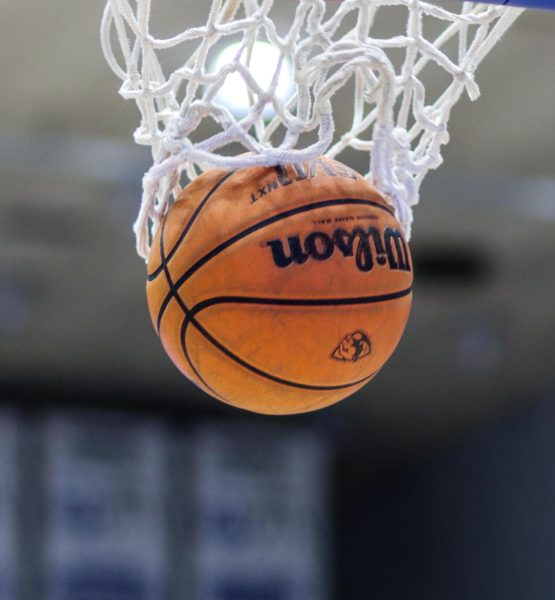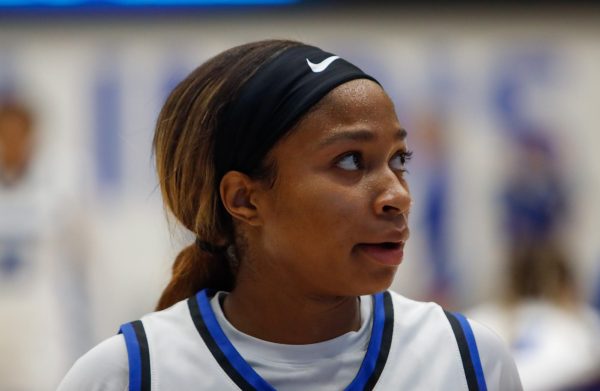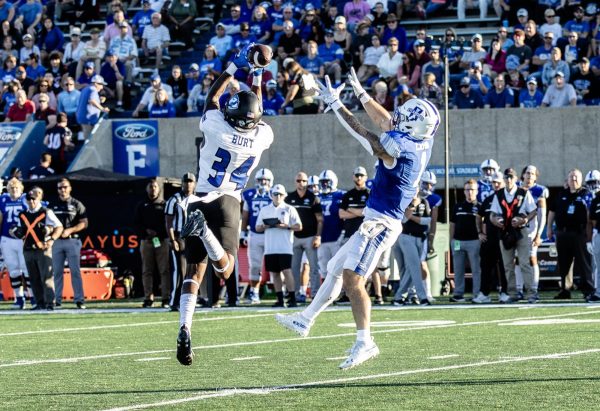Column: Time for football to prove itself a run team
Eastern prides itself on running the football.
That’s the game plan each week. Give the ball to the running back who is in the game and let him eat up yards on the ground and time off the clock.
That’s been the Panthers’ motto from the start, and the history of Eastern running backs proves that point.
Eastern has had 18 1,000-yard rushers since 1963. Seven of those running backs put up multiple years of more than 1,000 yards rushing.
Nate Anderson was the first with 1,255 yards in 1972 and 1,261 yards in 1973.
Poke Cobb – Eastern’s all-time leading rusher – had three seasons of 1,000 or more rushing yards between 1976 and 1979. His 1,609 rushing yards in 1979 was the season best in Eastern history.
Kevin Staple put together back-to-back 1,000-yard or more seasons in 1982 and 1983. Willie High had three straight from 1994-96, J.R. Taylor did it in 2001 and 2002, and Vincent Webb Jr. put together three straight from 2004-06.
But this season could be the first time since 2004 that Eastern has not had a 1,000-yard rusher. Red-shirt senior running back Travorus Bess leads the team with 465 yards on 84 carries for an average of 77.5 yards per game.
Bess, who had 183 of those rushing yards against Illinois, is on pace to fall just short of the 1,00-yard mark. If he continues at his current rate, Bess will end the season with 930 yards.
The Panthers have also gotten production in the backfield from red-shirt sophomore Chevon Walker and freshman Desmin Ward.
Walker is, by far, the fastest player on Eastern’s team. If he finds a hole to sneak through, he’s capable of the “home run” play. He can chew up yards in a heartbeat and be past opposing team’s defenses in a blink of an eye.
But Walker hasn’t done that yet. He missed the first three games of the season because of a suspension stemming when he was at Florida, was used sparingly against Illinois State and then missed the Jacksonville State game because of an ankle injury.
Walker’s biggest problem right now, however, might be the way he’s been approaching prospective holes created by the Panthers’ offensive line. If he can’t rush outside of the tackles, Walker struggles to get downfield because he tries to be too lateral in his approach. Too much side-to-side movement won’t get you downfield.
Ward has played well as a true freshman. He scored his first career touchdown against Illinois and has proven to be a reliable alternative for short-yardage situations because of his size. Ward is 6-feet tall and weighs 225 pounds and can bull his way through the middle of the line to pick up yardage. While he doesn’t have great top-end speed, Ward is quick enough to pull away from defenders given the opportunity.
Combined, Eastern’s three backs have rushed for 654 yards and four touchdowns. Those numbers aren’t nearly high enough through six games for a team that prides itself on running the football.
The touchdown mark might be the biggest cause for concern. Eastern had 16 rushing touchdowns through six games last season. The Panthers had also rushed for 1,083 yards in their first six games of the 2007 season. While the numbers might be skewed by the Panthers’ 311-yard, seven-touchdown game against Indiana State last season, the rushing statistics from 2007 dwarf this year’s stats.
Eastern is gaining 109 yards per game on the ground this year. Again, last year’s statistics through six games were higher. The Panthers averaged 180.5 yards in their first six games.
Red-shirt junior quarterback Bodie Reeder has improved from last season and is a bigger component of the Panthers’ offense this year.
But if Eastern can’t prove it can run consistently, teams will drop more defenders into coverage. If the Panthers want to be competitive, they need to find a better balance between rushing and passing.
Scott Richey can be reached at 581-7944 or at srrichey@eiu.edu.





































































